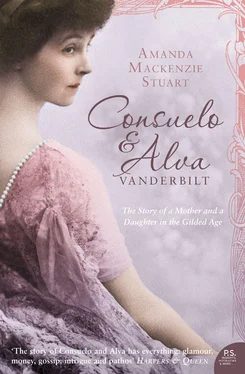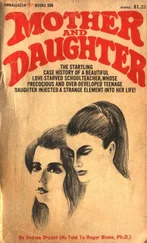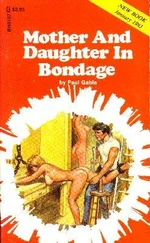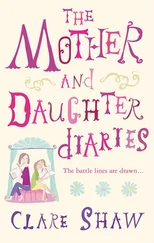While the Valiant was under construction, Alva occupied herself with the finishing touches to Marble House so that it was ready to receive its first guests in August 1892. There was plenty to amaze these visitors who were welcomed into the house through an elegant and elaborate bronze entrance grill (weighing 10 tons and made by the John Williams Bronze Foundry of New York). In the hall, warm and creamy Siena marble lined the walls, floors and staircase. Guests were then invited to admire rooms that have been described by one expert as a series of knowledgeable experiments in French decorative style. 13 The dominant theme was the art and architecture of Versailles. In the upper hall a bas relief of Richard Morris Hunt faced a matching bas relief of the architect of Versailles, Jules Hardouin Mansart. The dining room was inspired by the Salon of Hercules, the Siena marble of the entrance hall giving way to walls lined with pink Numidian marble specially quarried in Algeria. A painting of Louis XIV attributed to Pierre Mignard, said to have hung in the Salon of Hercules at the time Alva visited the palace in the late 1860s, dominated one end of the room.
The dining room was only surpassed by the ballroom – the Gold Room – Alva’s miniature edition of the Hall of Mirrors at Versailles, a riot of neo-classical exuberance with panels of Aphrodite, Demeter, Pan and Heracles suggesting a world of love, beauty, revelry and music sadly at odds with the lives of the proprietors. (Only a panel of Heracles aiming an arrow at Nessus who had made off with his wife comes close to reflecting emotional turmoil behind the scenes.) Above the marble mantelpiece, bronze figures bore vast candelabra, while cupids capered playfully and cherubs blew trumpets on the walls and ceilings. The Gold Room was dominated by wood panels gilded in red, green and yellow gold carved by the architectural sculptor Karl Bitter, its dazzling magnificence multiplied many times by vast mirrors hung over the four doors, above the mantelpiece, on the south wall, and by the south windows. Elsewhere in the house, Louis XV replaced Louis XIV in an outbreak of Rococo Revival: swags and garlands of flowers, masks, and somersaulting cherubs prevailed here and in Alva’s bedroom an eighteenth-century four-poster bed stood on a very fine Aubusson carpet.
The anomaly was the so-called Gothic Room, probably inspired by the Bourges house of the great medieval merchant, Jacques Coeur, whom Alva greatly admired. Paul Miller, curator at the Preservation Society of Newport County, suggests that the Gothic Room may originally have been intended for 660 Fifth Avenue. In 1889 the Hunts and Vanderbilts met in Paris to discuss furnishings at a meeting that coincided with the publication of a catalogue raisonné of Emile Gavet’s collection of European works of art from the thirteenth to the sixteenth centuries. The Vanderbilts bought half the collection, including a ‘Madonna and Child’ by Luca della Robbia that now hangs in the Metropolitan Museum of Art in New York. Hunt’s design for the Gothic Room was then transferred to Marble House to display objets purchased from the Gavet collection, though the room acquired American accents in the process: the foliate cornice around the room which was inspired by Coeur’s house reappeared with crabs and lobsters to reflect the seaside setting. 14
In 1892, those who knew Alva best might have detected her unhappiness in much of this design. She once described Marble House as her fourth child and its interior made few concessions to her husband, other than cartouches bearing the monogram ‘WV’ and a small study reflecting his sporting interests. Meanwhile, Alva’s preoccupations could be found everywhere: on the ceiling painting in her bedroom where the paradoxical Goddess Athene reigned supreme, war-like but the goddess of fine craftsmen, and in many references to the French ancien régime. Even the use of marble suggested a fugitive memory of the Smith house in Mobile. If it is true that the best buildings of the Gilded Age dissolved almost entirely into make-believe, her greatest collaboration with Richard Morris Hunt had this quality in abundance. Even more than 660 Fifth Avenue, Marble House was characterised by a feeling of withdrawal from the world outside. But here there was a sense of unhappy withdrawal from a miserable marriage too, as if Alva has turned in on herself and back towards the world of the ancien régime she loved as a girl before the harsh compromises of adult life took their toll. To some, the Gold Room still stands as a symbol of the heartless, glittering emptiness of the Gilded Age; but it can also be seen as the most heartfelt room in Newport, an intense and private dream.
As far as Consuelo was concerned, however, Marble House was associated with sensations closer to nightmare, claustrophobia and control. It felt like a gilded cage. Even the gates were lined with sheet iron. ‘Unlike Louis XIV’s creation,’ she wrote tartly, ‘it stood in restricted grounds, and, like a prison, was surrounded by high walls.’ 15 Consuelo was sixteen when Marble House was finished. In spite of this, Alva conceded nothing to her daughter’s taste. In this instance her vision of the Marble House interior entirely overpowered the section of her child-rearing theory that involved independence. Still a doll in a doll’s-house, Consuelo’s bedroom was designed by her mother down to the last detail and furnished with objects which she scarcely dared to move. ‘To the right on an antique table were aligned a mirror and various silver brushes and combs. On another table writing utensils were disposed in such perfect order that I never ventured to use them. For my mother had chosen every piece of furniture and had placed every ornament according to her taste, and had forbidden the intrusion of my personal possessions.’ 16 It was this bedroom that inspired one of the most quoted passages about Alva from Consuelo’s memoir The Glitter and the Gold : ‘Often as I lay on the bed, that like St Ursula’s in the lovely painting by Carpaccio stood on a dais and was covered with a baldaquin, I reflected that there was in her love of me something of the creative spirit of an artist – that it was her wish to produce me as a finished specimen framed in a perfect setting, and that my person was dedicated to whatever final disposal she had in mind.’ 17
When Marble House opened to widespread acclaim during the Newport season of 1892, Alva was less concerned with the final disposal of Consuelo than the state of her own marriage. ‘Sunshine by proxy’ was decidedly not for her. She was only thirty-nine. She refused to accept a scenario in which she tolerated her husband’s philandering and retired to a virtuous life in the shadows. She particularly objected to the way in which rich husbands enforced their wives’ powerless position by reminding them of their financial dependence. ‘If a wife, hungering for love and with more spirit than most of her sex, asserted her right to a lover or to contacts with the outside world, the husband declared she was ruining his reputation along with her own and with the power of the bank resources at his command, bade her retire to the obscurity of respectability.’ 18 Alva’s reaction to this was spirited. She acquired a lover of her own.
Oliver Hazard Perry Belmont was the wayward son of financier August Belmont. Married to a socially pre-eminent wife of impeccable pedigree, August Belmont was of Jewish origin, though he had converted to Christianity, and represented the Rothschilds’ interests in New York. He lived flamboyantly, introducing the first French chef to a private New York house, establishing a pace-setting example when it came to wining and dining, and causing wild gossip. He was another of Mrs Astor’s principal bêtes noires , though her resistance to the next generation of Belmonts gradually dissolved.
Читать дальше












